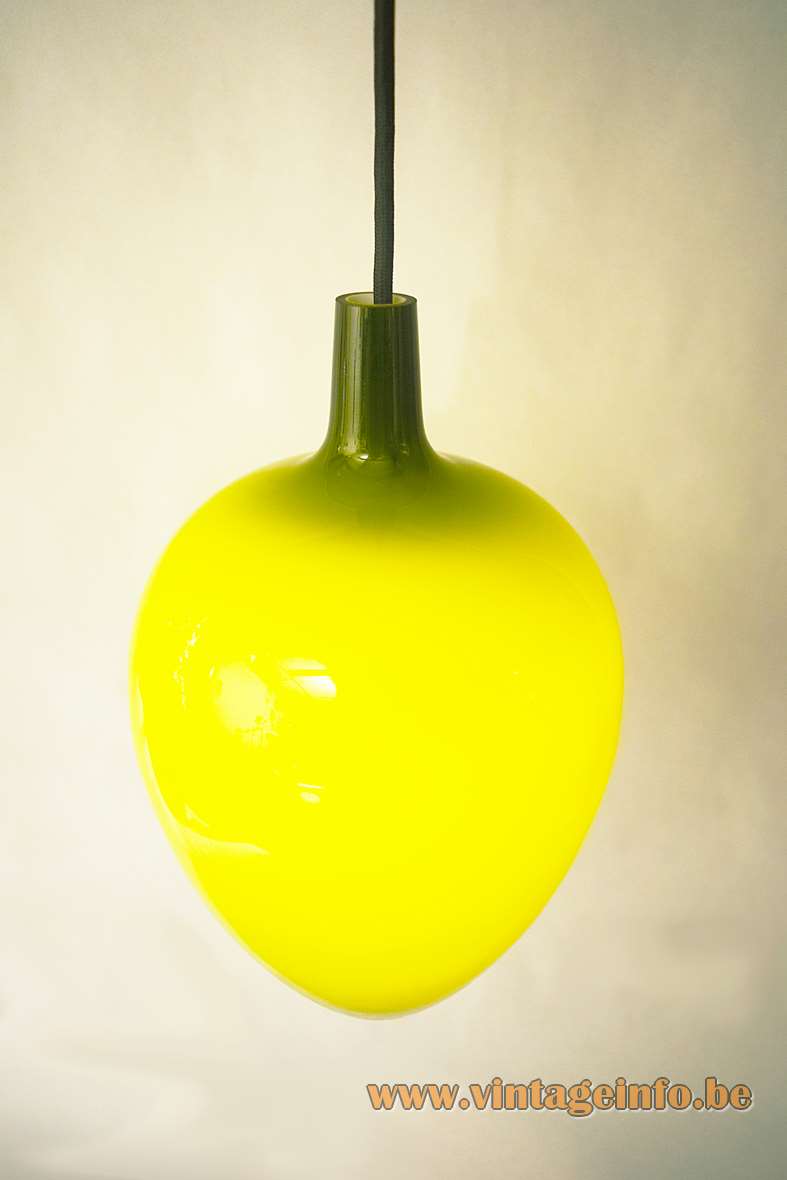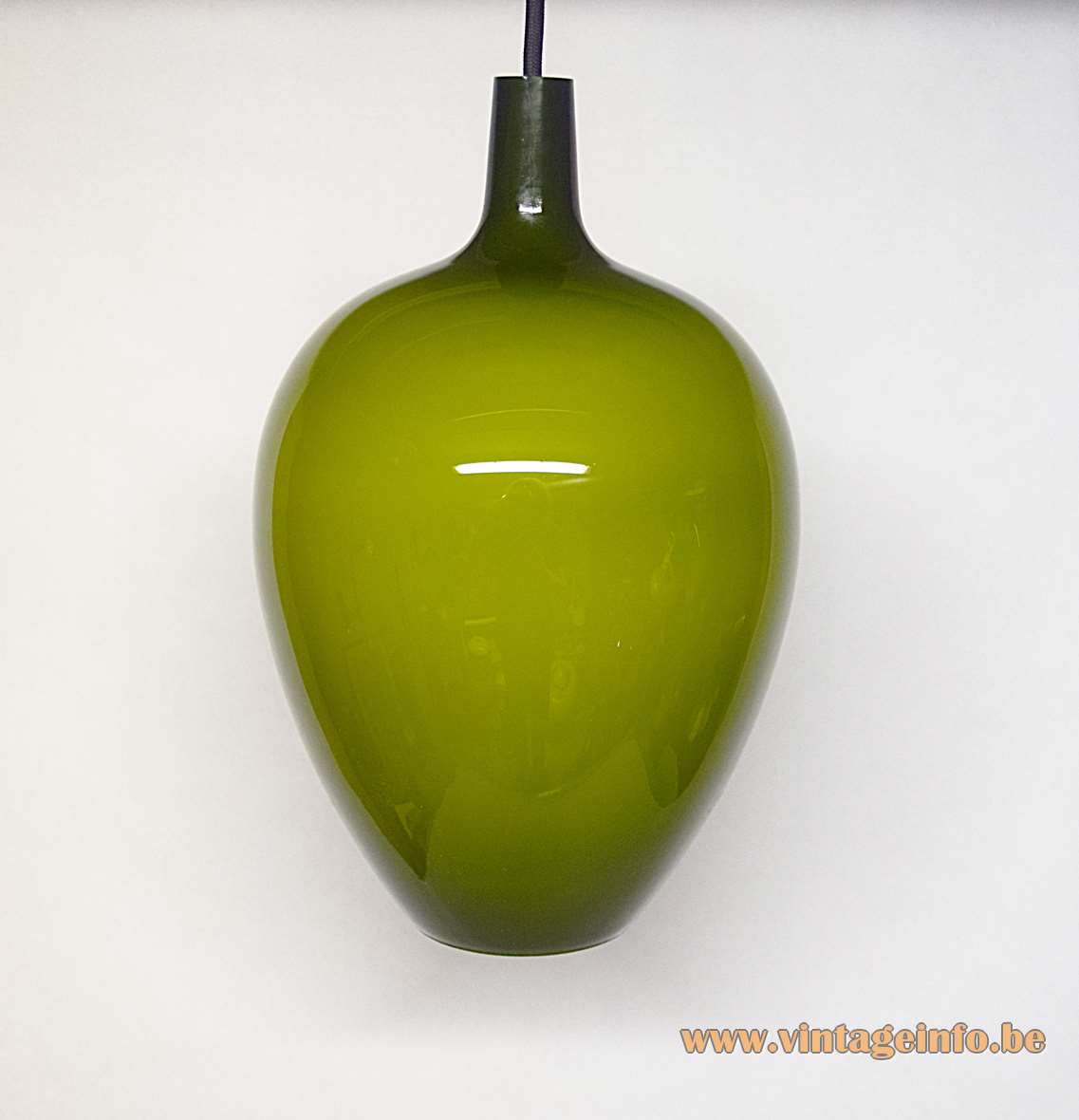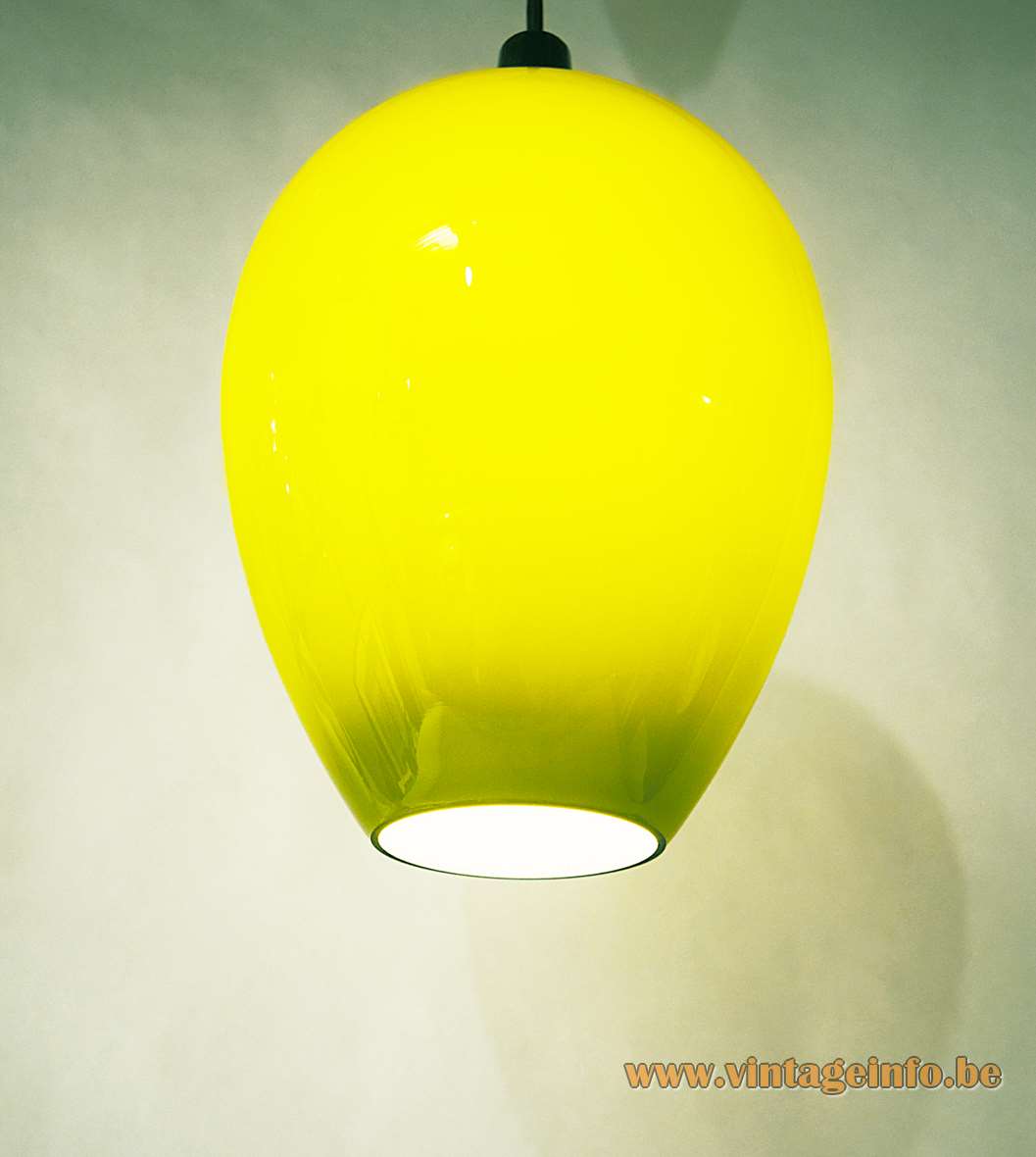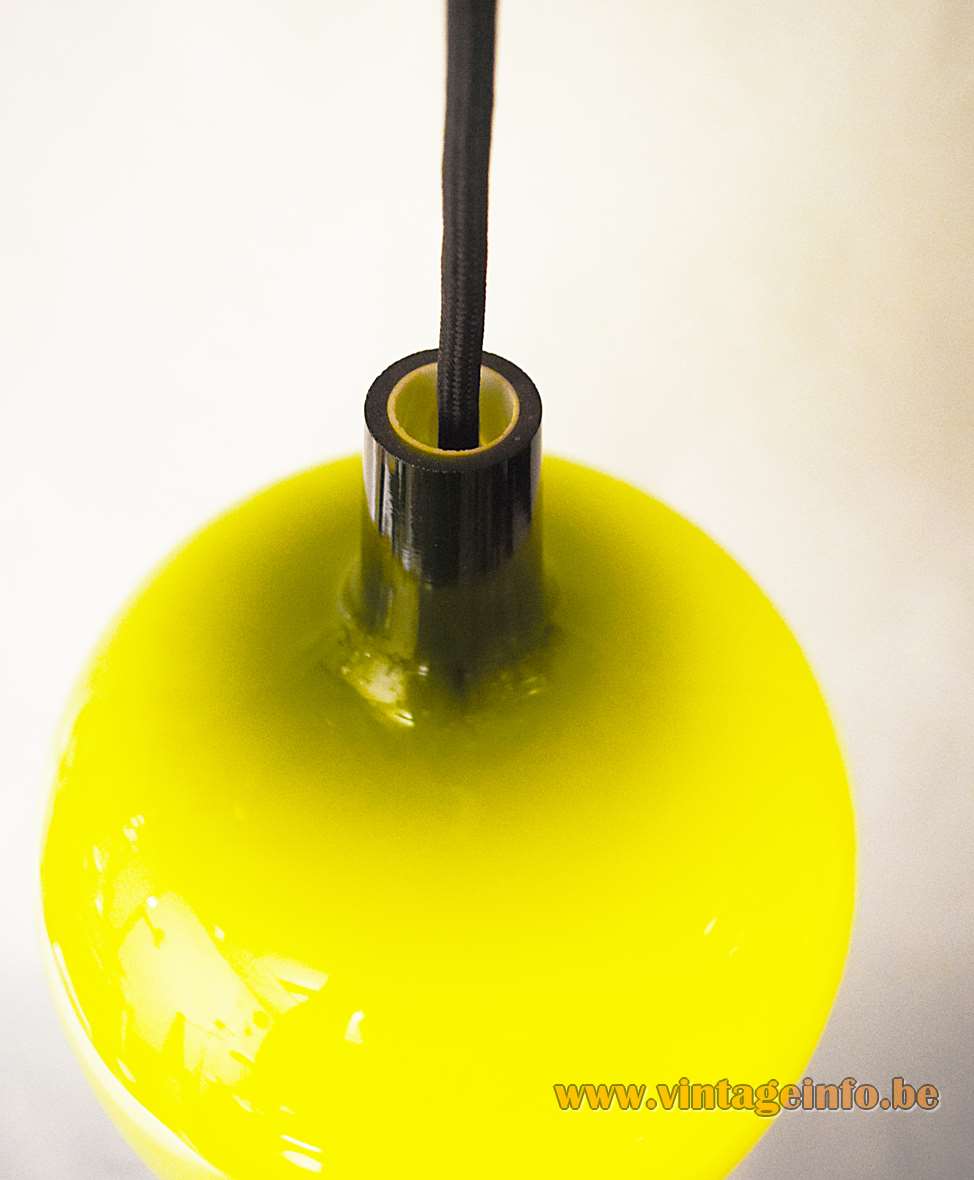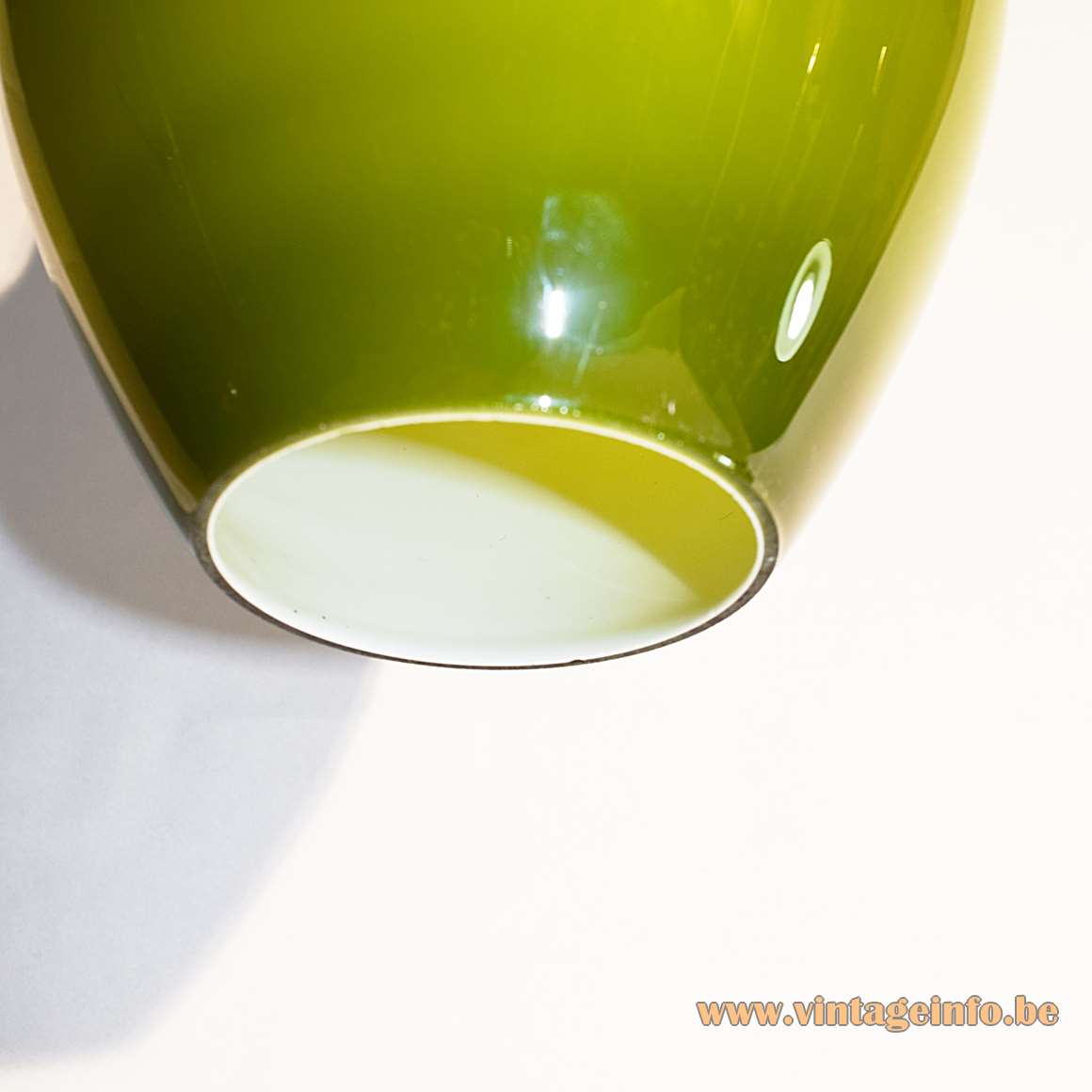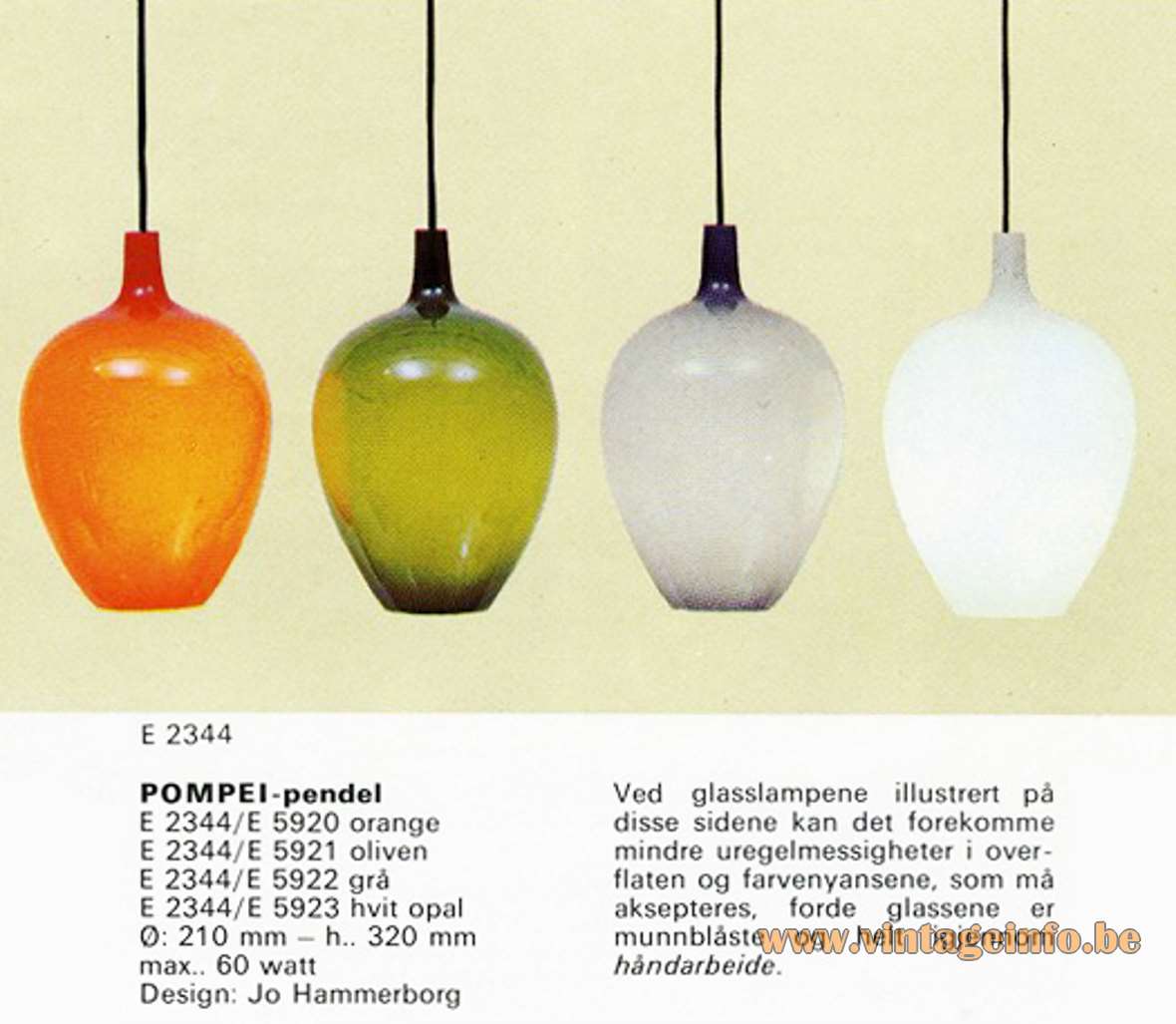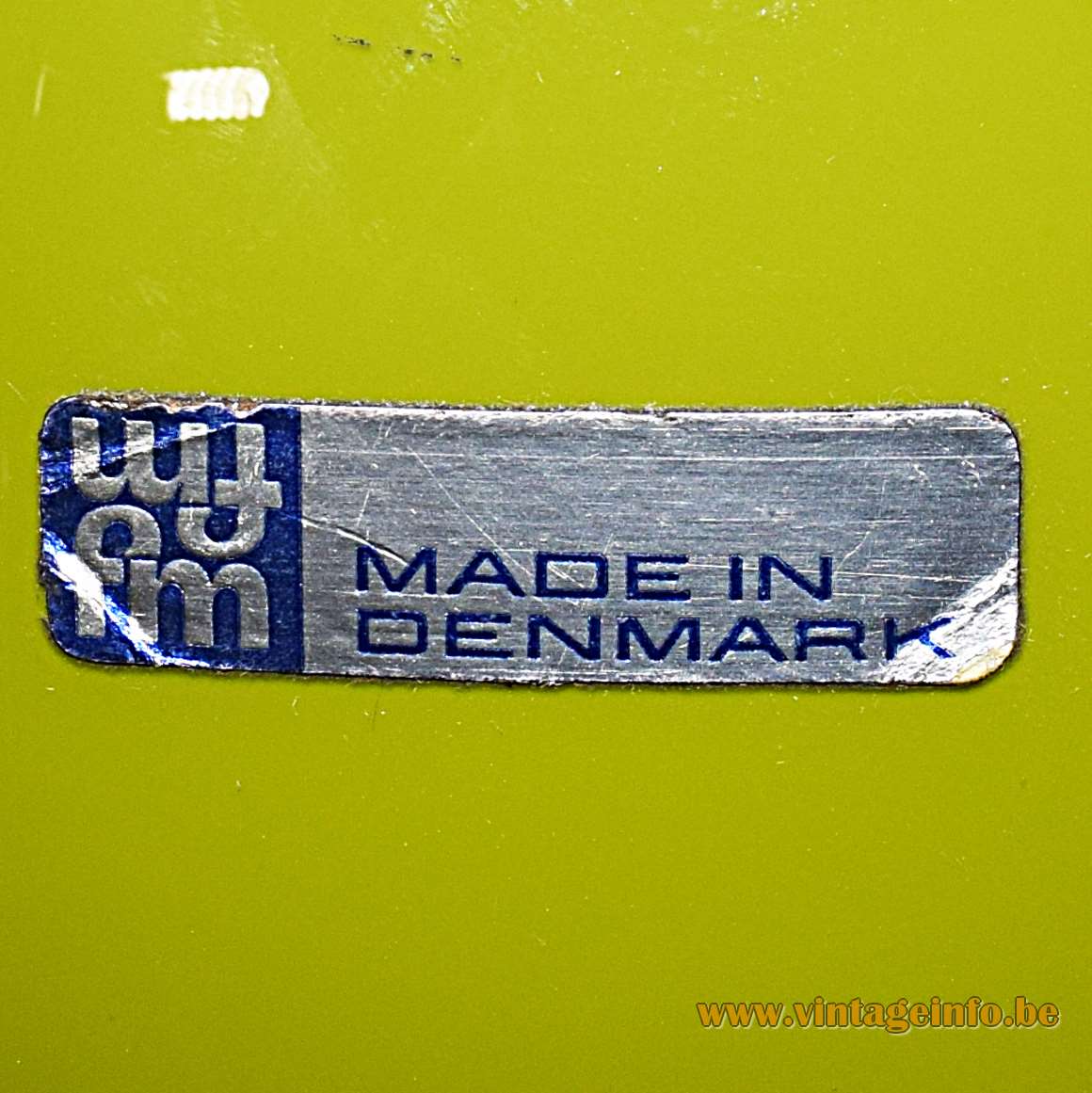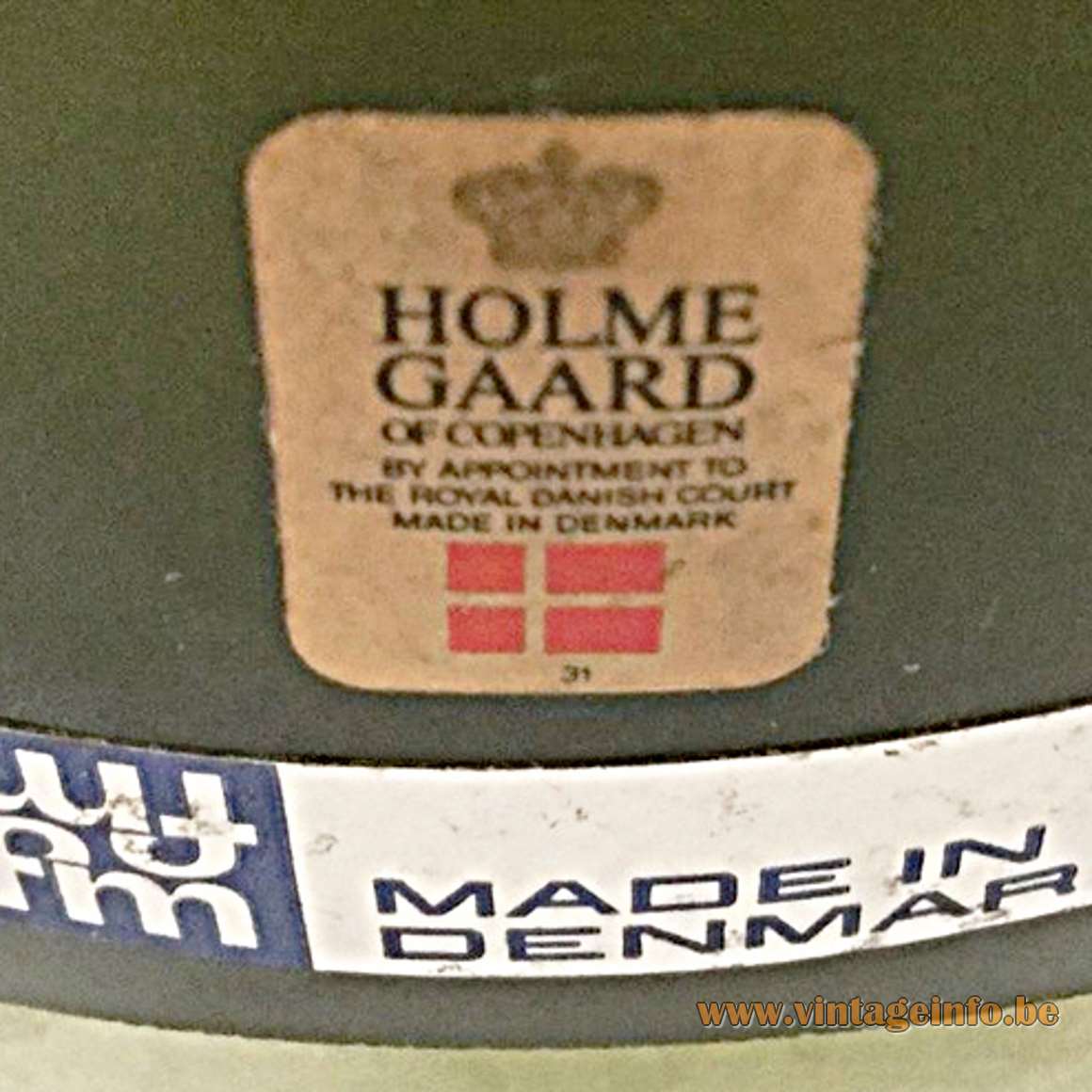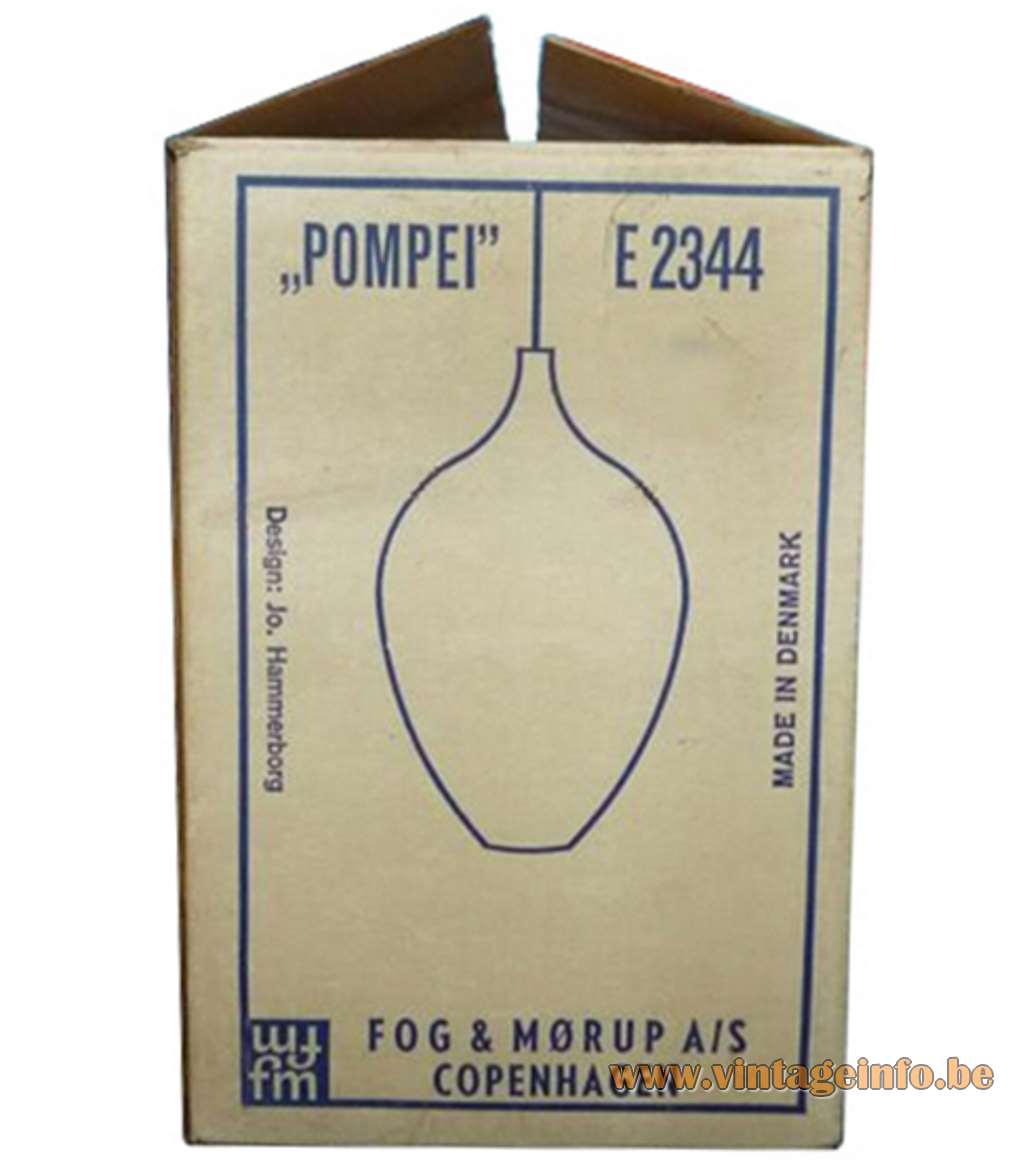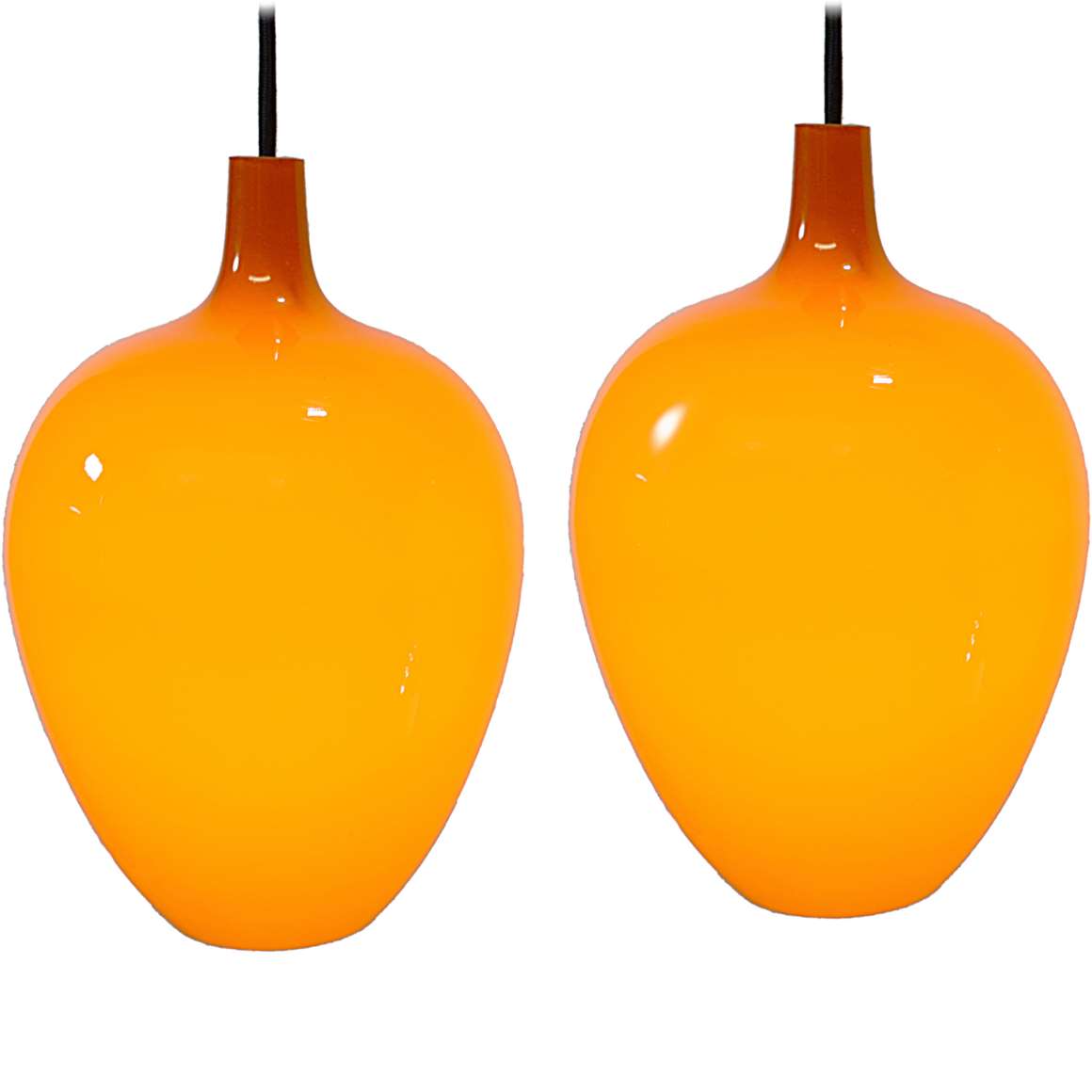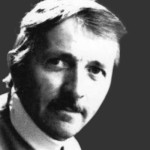Fog & Mørup Pompei Pendant Lamp – Catalogue Picture
Holmegaard
The Holmegaard glass-works factory was founded around 1820 by Count Christian Danneskiold-Samsøe in the town of Holmegaard Mose (“Holmegaard Bog”), but he needed permission from the King of Denmark.
The Count died in 1823 without receiving an answer from the king. A short while after his dead, permission was granted and his wife Countess Henriette Danneskjold-Samsøe started the business. Production began in 1825.
In the beginning the company produced only green bottles, but within its first decade production was shifted on to table-glass.
During the 20th century, artists such as Jacob Eiler Bang (1899-1965) entered the equation, designing and shaping Holmegaard’s glass products. Designer Per Lütken(1916-98), and Jacob Bang’s son, Michael (1944-2002) joined the firm and brought it to what it is now: a well known company, famous for its high-quality products of Danish design.
Today Holmegaard is part of the Rosendahl Design Group.
Fog & Mørup Pompei Pendant Lamp
Materials: Hand blown crystal glass lampshade. White on the inside, clear olive green on the outside (incamiciato). Some metal parts. Bakelite E27 socket.
Cord Length: 80 cm / 31.49’’
Height: 32 cm / 12.59”
Width: ∅ 22 cm / 8’66”
Electricity: 1 bulb E27, 1 x 75 watt maximum, 110/220 volt.
Any type of light bulb with an E27 screw base can be used. For this lamp preferable an opaque/white or frosted bulb.
Period: 1960s – Mid-Century Modern.
Designer: Jo Hammerborg (1920-1982).
Manufacturer: Fog & Mørup A/S and Kastrup, Holmegaard, Denmark.
Other versions: This Fog & Mørup Pompei pendant lamp was made in many colours, but only in one size. Often named Pompeii lamp. Named after the ancient Roman city near Napels, Italy.
Incamiciato: Overlay lattimo glass (= milky looking glass) with a layer of transparent coloured glass. It’s an Italian word, because the technique was invented on the Murano Island of Venice.
This Fog & Morup Pompei pendant lamp was designed by Jo Hammerborg in 1963 for Fog & Mørup. Kastrup, another Danish company, produced the glass for these lamps. After 1965 the company became part of Holmegaard.
Fog & Mørup
Ansgar Fog (1880-1930) and Erik Mørup (1879-1972) started their business together in 1904 as a metalwork wholesaler. Two years later they moved to the capital Copenhagen and began to focus on lighting production and over the years taking over several electrical and lighting companies. It was only in the early 1960s that Fog & Mørup really emerged as a key force in lighting design, following the company’s appointment in 1957 of Jo Hammerborg as head of design.
Important designers and architects that worked for the company are: Claus Bonderup, Torsten Thorup, Sidse Werner. Sophus Frandsen, Jørgen Bo, E. Balslev, Peter Avondoglio,. Karen Clemmensen, Ebbe Clemmensen, Hans Due and of course Jo Hammerborg himself.
Lyfa
In the late 1970s Fog & Mørup merged with Lyfa, another leading Danish lighting producer. In 1980 Jo Hammerborg retired. A few years later Lyfa-Fog & Mørup was taken over by Lyskær. The name changed to Lyskaer-Lyfa.
Lyskaer-Lyfa produced lights until 1991, when it was incorporated into Horn Belysning A/S from Aalstrup, also in Denmark, which was itself taken over in 2005 by Nordlux from Ålborg and at a large extent dismantled.
Horn Belysning
The Horn Belysning A/S company was founded in 1952 as a family business and was first named E.S. Horn. In 1963 it changed into Horn Belysning – Horn Lighting.
The company produced lights for IKEA and several other European retail chains. They designed lights but also imported lights from China. In the 1980s Horn was the second biggest light company in Denmark.
In 2005 the name changed into Lightyears, today owned by Republic of Fritz Hansen.
Jo Hammerborg
Johannes (Jo) Hammerborg was born on 4 February 1920 in Denmark.
In 1957 he became head of design at Fog & Mørup. Hammerborg was a prolific designer, personally creating some 100 lamps for Fog & Mørup and also collaborated with other designers in adapting their designs. Jo retired in 1980, only a short time before both his own death in 1982 and the take-over of the company.
Links (external links open in a new window)
Lightyears – Republic of Fritz Hansen
Horn Belysnign history on Danish Vintage Design
More info on the website of Jo Hammerborg: www.johammerborg.com – offline and domain name for sale (2018)
The story of Fog & Mørup, Danish modern lighting superstar: www.classic-modern.co.uk/fog_morup
